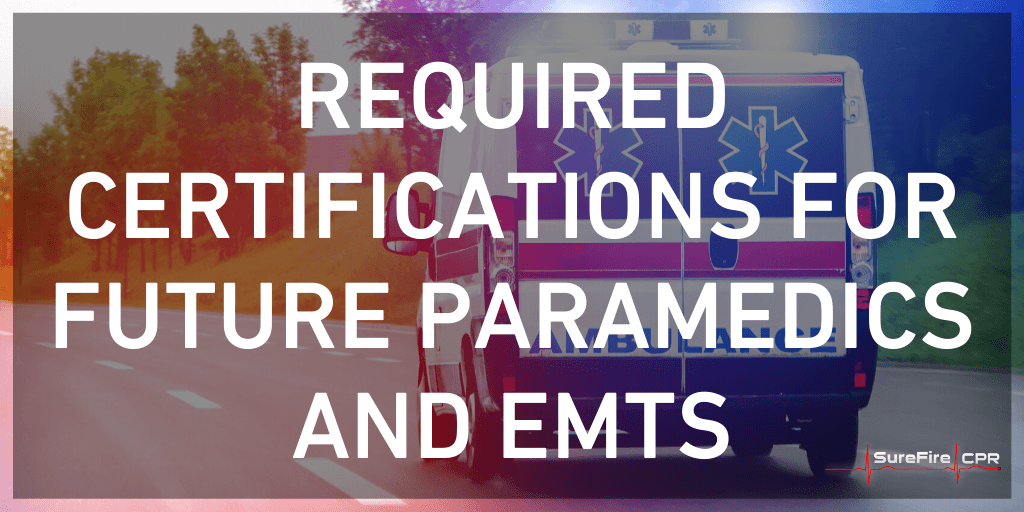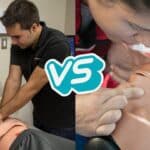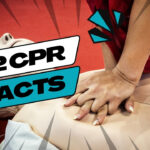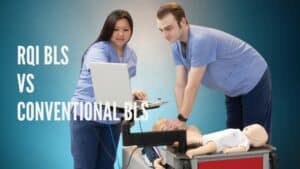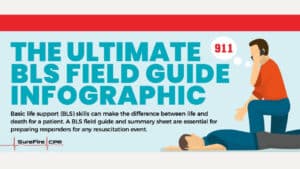So, you want to be an EMT or paramedic, but don’t know which certifications and accreditations you need in order to get the job. Have no fear, our experts at SureFire CPR are here to fill you in. We’re Southern California’s premier provider of life-saving certifications, including CPR, BLS, PALS, PEARS and more. (Spoiler alert: at least one of these certifications is absolutely necessary for all future paramedics and EMTs.) Our award-winning team is staffed by professionals with decades of experience as nurses, firefighters, and, of course, paramedics and EMTs. We’ve compiled a list of all of the required certifications and accreditations you will need in order to work one of these two life-saving jobs. Read on to learn more, and get certified with our team today!
High School Degree or GED
First thing’s first: if you want to be an EMT, you need a high school diploma or a passing score on the GED. Depending on where you’re at now and how into school you were back in K-12, you may need to start studying. Put simply: if you don’t have the equivalent of a high school degree, you are not going to be allowed to be an EMT. If you don’t, it’s time to hit the books. Find yourself a GED study guide or two. Take a GED training class if need be. Learn to love learning once again, because if you want to be an EMT, this is definitely not the last time that you are going to need to study hard. You’ll see that as our list continues!
If you are on the other side of the youth education spectrum and finished up high school when you were 15 and now want to become an EMT at 16, you are going to need to wait just a bit longer. You have to be 18 years old to become an EMT. So hold off on that dream till you are 17 and a half.
Pass a Physical Examination and Get a Screening for TB and Hep B
While not technically certificates, passing a physical examination and screenings for Tuberculosis and Hepatitis B are important hurdles that you are going to need to pass if you want to become an EMT or Paramedic. With a bit of thought, it’s not hard to see why both the physical examination and screening for TB and Hepatitis B make total sense for future paramedics and EMTs.
Working in the emergency medical field is an extremely physically demanding job. It’s on you to lift people of all shapes and sizes onto stretchers, off of stretchers, into ambulances, and off of ambulances over the course of a full shift. You need to have strength and endurance, both of which will be tested in the field. So hit the gym and make sure you are in a good enough shape to pass the physical examination and handle the rigors of the job itself.
Furthermore, since you are going to be working in close contact with sick or infirmed individuals, having Tuberculosis or Hepatitis B is an immediate red flag. It’s good to know if you have either of these diseases (for all sorts of reasons, not just for your potential career as an emergency medical responder) as early as possible. That way, if test results do come back positive for TB or Hep B, you can pivot your priorities away from such a hands-on medical field job.
Get BLS Certified
Before you enroll in an EMT program, you will need to get a BLS certification. The most widely accepted BLS certification comes from an American Heart Association approved BLS instruction program. BLS courses take a relatively short amount of time to complete (usually less than 4 hours), and depending on who you get your certification with, some of the parts of the training can be completed in an online module format. It is recommended, however, that your first BLS class be taken in a full “instructor-led” format where you will get more hands-on practice and the ability to ask more questions.
Once you have completed your BLS training, your certificate will be good for 2 years, so make sure that you are not coming to the end of your two-year period right when you are starting to look for an EMT program. If you think it might be close, get recertified to be safe—you can recertify at any time.
Complete an EMT Program
Completing an EMT program is one of the most demanding and largest time commitments of any item on this list. It also teaches the most crucial skills for anyone wanting to become an EMT, or later a paramedic. Each state has slightly different requirements for its EMT program, so be sure to do your research before enrolling in an EMT program. The Commission on Accreditation of Allied Health Education Programs keeps an online database of state-approved accredited EMT programs. Be wary of programs and scammers that are not listed on the Commission on Accreditation of Allied Health Education Programs database. These programs often offer certifications that are not accepted in the states in which the programs are taught. Check before enrolling, and save yourself the headache of getting certified in a state that isn’t your own.
Wondering how and where to enroll? Most EMT programs are offered up at emergency care training facilities, technical and trade schools, and community colleges, so websites for these facilities and schools are good places to start in your research for an EMT Program that fits into your busy schedule.
Pass the Cognitive Examination
After completing your EMT program, you are going to need to pass two separate examinations in order to become a certified EMT. The National Registry Emergency Medical Technician Cognitive Examination (or “the cognitive exam,” for short) is a computer-adapted test consisting of 60 to 110 questions designed to gauge your mental aptitude for the EMT role. Your EMT program will focus heavily on getting you ready to pass the cognitive exam (and the psychomotor exam, covered below) with flying colors. If you still aren’t feeling comfortable with the material covered on the cognitive examination, there are scores of exam prep books and practices tests out there online, at your local library, or at your favorite online or in-person bookstore.
Wondering what, exactly, the cognitive exam covers? Included on the cognitive exam are subjects such as respiration and ventilation, cardiology and resuscitation, EMS operations, medical care, trauma care, obstetrics and gynecology, and airways. According to the National Registry of Emergency Medical Technicians, in order to pass the cognitive examination, you must provide a “standard level of competency” in the subjects listed above. The exam typically runs about two hours and students earn a score that ranges from 70 points to 120 points.
Pass the Psychomotor Exam
The second phase of your post-EMT course examination process is a psychomotor examination. While this sounds complex and daunting, it is really just a practical skills examination. If you have been doing all of the work in your EMT program, you should be in a good place coming into the psychomotor examination. Properly repeat the movements you learned in your EMT program, and you’ll pass with high marks. The psychomotor examination is administered by an individual state’s emergency management services offices, which means the required score to pass the psychomotor examination differs from state to state. Be sure to check in with your state’s EMS office to see what is required to pass the examination.
Want to know which skills will be covered on the psychomotor examination? Examples of emergency skills that are tested include conducting head to toe patient assessments, immobilizing spines, providing mouth-to-mouth or other ventilation procedures, caring for long bone fractures, immobilizing dislocated joints, managing shock, and managing cardiac arrests. You can have all the knowledge in the world, but without the skills to put it into to practice, you’ll be useless as an EMT. And without a passing score on the psychomotor examination, you won’t get to be one at all. To pass with flying colors (or acceptable marks), pay good attention in EMT school and practice up on your practice dummies so you can make a difference when it counts.
Complete Paramedic Training
Paramedics are to EMTs what nurse practitioners are to nurses. They are more skilled, have more responsibilities, and are an overall a step up in their respective fields. If you have the time, money right now, and wherewithal to become a paramedic, go this route. The money is better, the job placements are better, and the care you give to those in need is better. Just like with EMT school, there are specific paramedic schools that typically run 1-2 years. To become a paramedic, you’ll need all of the above EMT certifications, plus a paramedic certification obtained from a certified paramedic program. Paramedic programs consist of classroom training covering a wide range of topics, including advanced anatomy and physiology, in-depth life support techniques, advanced pediatric care, and more. Paramedic programs also involve intensive hands-on training at healthcare facilities or fire departments. They can last anywhere from 6 months to 2 years. Many paramedic schools also have a requirement of a certain amount of field experience as an EMT prior to medic school. It could be as short as 6 months or more than a year.
Get your CPR Certification (and Other Certifications!) Here at SureFire CPR
Ready to take the first step to becoming an EMT or paramedic. There’s no better place to get your BLS certification in Southern California than right here with our experts at SureFire CPR. If you’re looking to become a paramedic, taking our course in ECG and Pharmacology will help you learn heart rhythms and medications. An ACLS and PALS class will give you head start as well when you get to the Cardiac and Pediatric sections of paramedic school. Our team of highly-skilled instructors has decades of experience in professional emergency response and classroom instruction. With courses all around Los Angeles County, Orange County, and the Inland Empire, we are sure that you’ll be able to find the CPR course that fits your schedule and budget. Explore our website to learn more about our award-winning team, and get certified with us today!

